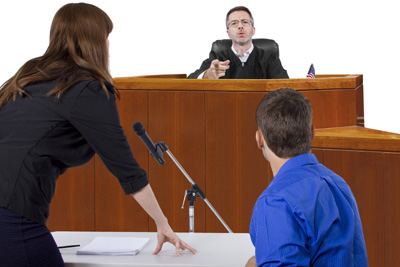So what if you give your friend a little help after they commit a crime. Better think twice  before you do that. Helping a person after they have committed a crime may make you an accomplice.
before you do that. Helping a person after they have committed a crime may make you an accomplice.
Elements of Being an Accomplice
For criminal culpability, the prosecution has to prove that the person acted a particular crime and that he or she did so with the intent stated in the relevant statute. For example, the crime statute may state that the defendant had to “knowingly,” “willfully” or “deliberately” commit some act.
In accomplice liability cases, the court can find a criminal defendant guilty for acts that someone else actually commits. In order for the prosecution to successfully meet its burden to find a defendant guilty of accomplice liability, it must prove that the accomplice had the intent to help with the crime being committed. This means that the accomplice has to know that the principal is planning to commit a crime and that the accomplice intends to help the principal succeed in the commission of the crime. Additionally, state law usually requires that the accomplice aided, counseled, encouraged or assisted with the commission of the crime.
Scope of Liability
The accomplice can be found guilty of the actual crime that was planned and committed. Additionally, he or she can be found guilty of other crimes, as long as they were foreseeable as being committed during the target crime.
Examples of Accomplice Liability
There are many fact patterns that can rise to the level of accomplice liability. For example, someone may be an accomplice if they are the get-away driver or the lookout for law enforcement. Additionally, a person can be an accomplice if he or she lends tools, weapons, money or other instruments necessary to commit the crime in question. An accomplice does not need to be present at the scene of the crime to be found guilty of the crime. An accomplice can be found to have provided aid before, during or after the crime.
Withdrawal of Support
In some jurisdictions, an accomplice can avoid criminal culpability if he or she withdraws support before the crime is completed. If the only aid that the accomplice provided was encouragement, he or she may be able to cancel accomplice liability by then discouraging the principal. If more aid is provided, the person may need to take greater action to neutralize further commission of the crime.
Some states require the accomplice to thwart the crime completely in order to avoid being found guilty as an accomplice. For example, the accomplice may be required to call law enforcement and have law enforcement stop the principal to avoid his or her own criminal responsibility.
Difference between Conspiracy and Accomplice Liability
Accomplice liability is different and separate from conspiracy. A conspiracy occurs when two or more people actively conspire to plan and commit a crime in the future. A co-conspirator actually helps to commit the crime while an accomplice assists in the commission of a crime but does not actually commit the crime itself.
An accomplice can only be found guilty if the crime was actually committed. However, a co-conspirator can be found guilty of conspiracy even if the underlying crime was not committed. For example, an accomplice to a robbery can be charged with robbery. If the crime was not committed, there is no accomplice liability. If there was a conspiracy to commit robbery, but it was thwarted, the co-conspirators can be charged with conspiracy. If the robbery was actually committed, they can be charged with conspiracy and robbery.
Being found guilty of conspiracy usually requires an overt act toward the commission of the crime. State law determines the level that makes a particular act an overt one. However, this act is usually one that moves along the commission of a crime and not just mere thoughts of criminal behavior.
Alexander Truluck focuses his practice as a criminal defense attorney in Clearwater, Palm Harbor, Largo, Dunedin and the Tampa Bay area.
For more information, visit our website at http://www.criminallawyerclearwaterflorida.com
or call (727) 799-3550.
